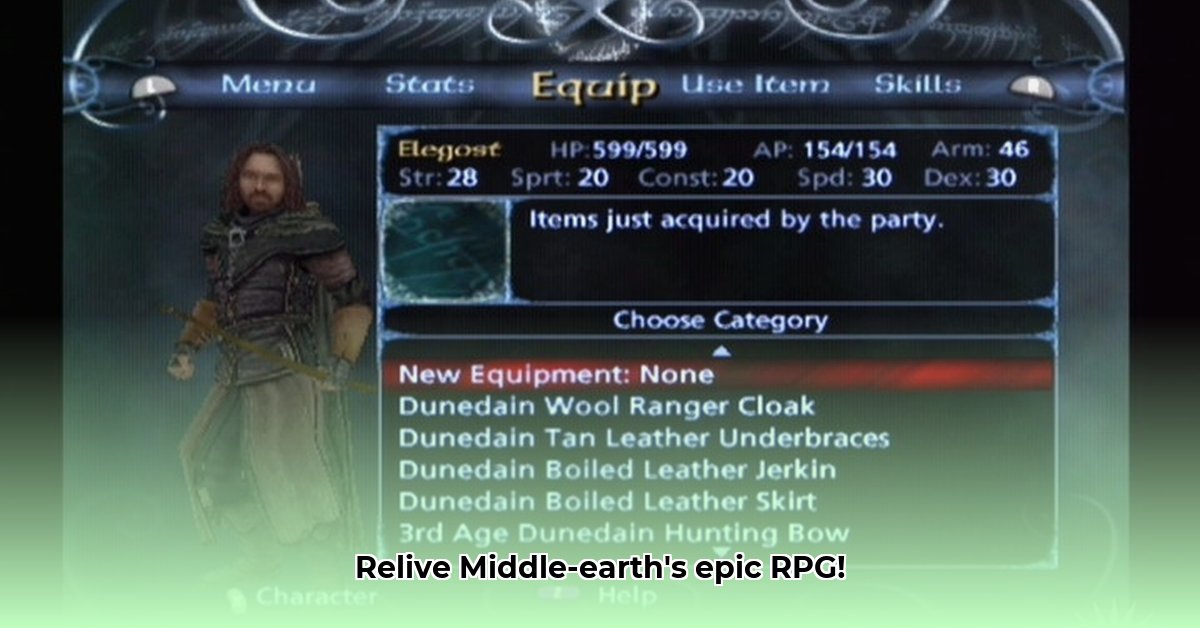
Journey back to Middle-earth with The Lord of the Rings: The Third Age, a PlayStation 2 RPG experiencing a resurgence thanks to the accessibility of PS2 ROMs. Released alongside the cinematic triumph of Peter Jackson's film trilogy, this game carved a unique niche in the vast world of Lord of the Rings adaptations. It wasn't merely a movie tie-in; it offered a unique blend of familiar locations and original characters, creating a Middle-earth adventure distinct from the books and films. This retrospective examines how this classic RPG holds up today, exploring its gameplay, narrative, strengths, weaknesses, and lasting legacy.
Gameplay: A Strategic Turn-Based Battle
Forget frantic button-mashing; The Third Age champions a turn-based combat system reminiscent of classic Japanese RPGs. You assemble a party of heroes, each possessing unique abilities and strengths. Strategic positioning is paramount – a timely heal can mean the difference between victory and defeat. The game cleverly interweaves familiar movie locations with original characters and storylines, creating an "expanded universe" adventure. While the gameplay loop may feel repetitive to some, the variety in scenarios and character builds helps maintain engagement, propelling players from one quest to the next. Many found its straightforward approach refreshing compared to the era's more complex RPGs. Did this simplicity, however, limit the game's overall depth?
Story: A Fresh Perspective on Middle-earth
While drawing inspiration from Tolkien's epic saga, The Third Age doesn't simply retell the films' narrative. Instead, it crafts its own compelling storyline, expanding the lore while introducing new characters and scenarios interwoven with familiar tales. Players encounter both original heroes and iconic movie figures. Ian McKellen's legendary voice work as Gandalf is undoubtedly a highlight, lending authenticity and instantly bridging the gap between the game's original story and the beloved source material. The narrative takes liberties with the source material, offering a fresh perspective that may surprise even longtime fans. But did these deviations enhance or detract from the overall experience?
Strengths and Weaknesses: A Balanced Appraisal
The Third Age excels in its immersive atmosphere, capturing the essence of Tolkien's Middle-earth and evoking a sense of wonder and adventure. The voice acting, particularly McKellen's performance, sets a high bar for the entire production. While the core gameplay engages many players, others might find it repetitive. Some criticize the storyline's departures from established lore, while others appreciate its unique approach. The PS2 era's graphical limitations are noticeable, yet they don't overshadow the overall experience. How effectively did the game balance its strengths and weaknesses within the technological constraints of its time?
Legacy and Lasting Appeal: A Timeless Classic?
Despite its flaws, The Third Age retains a dedicated following in the retro gaming community. Its accessibility via ROMs introduces new generations to this unique Lord of the Rings experience. It serves as a nostalgic reminder of a simpler era of RPGs, before hyper-realistic graphics and complex mechanics became the norm. Could this PS2 classic receive a remaster or remake? Given the enduring popularity of Lord of the Rings and the potential to modernize gameplay while preserving its spirit, the prospect is certainly enticing.
The Verdict: A Worthy Adventure
The Lord of the Rings: The Third Age isn't perfect, but it's a rewarding adventure. It masterfully balances familiarity and originality, capturing the spirit of Middle-earth while charting its own narrative course. The availability of PS2 ROMs ensures its continued reach to new audiences. Whether you're a returning fan or a newcomer, The Third Age offers a unique and valuable gaming experience. Is it a must-play in 2024? For fans of classic RPGs and the Lord of the Rings universe, the answer is a resounding yes.